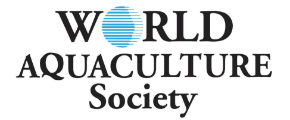IMPORTANCE OF ZOOPLANKTON INDUCTION IN WHITE LEG SHRIMP Penaeus vannamei INTENSIVE CULTURE PONDS
Induction of growth of zooplankton in the shrimp ponds at the initial period of culture is very crucial to provide live feed for the animals when they are still small and not used to accept the commercial pellets. A study was conducted to investigate use of a commercial nutrient powder to induce growth of zooplankton in the white leg shrimp (Litopenaeus vannamei) intensive ponds during the first 20 days of culture. Nutrient powder was applied daily continuously at a dose of 1 kg per 100,000 PL during the first 10 days. Quantitative and qualitative samples of zooplankton were taken right before application of nutrient powder and every day to day 10 and at day 20 to determine species composition and abundance of zooplankton in the ponds. At the same time, shrimp specimens were also collected (10 for each pond) to dissect the digestive tract to assess the selection of zooplankton as live feed during the early stage of grow-out by the cultured shrimp. The results showed that the most abundant group was protozoa (20 species, accounting for 42%), followed by copepods (18 species, 38%) and rotifers presented only 2 species in which Brachionus plicatilis was the most dominant species in number. However, protozoa were hardly found in the digestive tract, instead rotifers (Brachionus plicatilis) and copepod nauplii were the most dominant groups encountered during the first 4-5 days and replaced by copepods afterward. Densities of zooplankton in the induced ponds were significantly higher than those in the conventional ponds. Importantly, growth of shrimp (length and weight) also had a similar pattern. Significant higher growth of shrimp was also obtained in the induced ponds. This indicated that zooplankton are very important to white leg shrimp as initial live feed during the first 10 to 20 days of culture in the intensive ponds.










